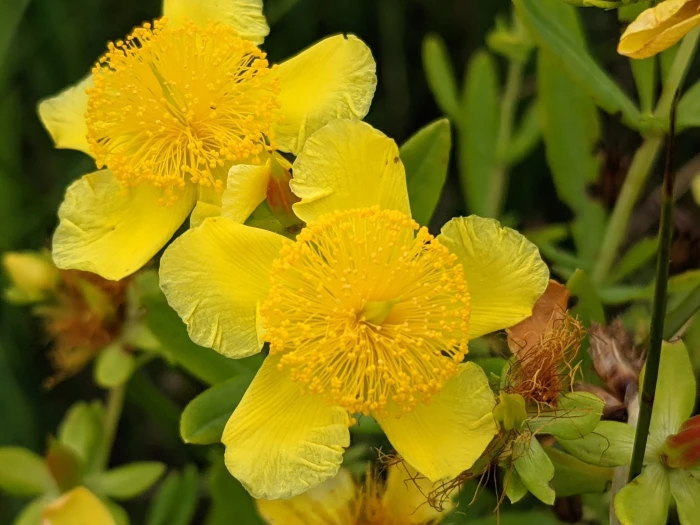Kalm’s St. John’s Wort
(Hypericum kalmianum)
Kalm’s St. John’s Wort (Hypericum kalmianum)
/
/

© Ethan Rose
CC BY 4.0
Image By:
© Ethan Rose
Recorded By:
Copyright:
CC BY 4.0
Copyright Notice:
Photo by: © Ethan Rose | License Type: CC BY 4.0 | License URL: http://creativecommons.org/licenses/by/4.0/ | Uploader: sci_punk | Publisher: iNaturalist |


















































Estimated Native Range
Climate Requirements for Reading, United Kingdom
| This Plant | Your Site | Plant Suitability for Your Location | ||
|---|---|---|---|---|
| • Precipitation | 21" - 51" | 27" | Your precipitation may be insufficient for this plant. Irrigate N" / year. | Irrigate N" / year |
| • High Temp. | 69°F - 91°F | 73°F | Your summer temperatures are normal for this plant. | Excellent |
| • Low Temp. | -8°F - 41°F | 35°F | Your winter temperatures are normal for this plant | Excellent |
This plant should grow well at your location with about N inches per year (Y minutes per month) of irrigation.
Summary
Hypericum kalmianum, commonly known as Kalm’s St. John’s wort, is a deciduous shrub native to the Great Lakes region, specifically in the northern United States and southern Canada. It thrives in a variety of habitats including calcareous sand prairies, marly pannés, prairie fens, and mesic prairies. This species prefers open areas where it can receive full sun. It typically grows 1-3 feet tall and wide, with a dense, rounded form. The plant produces bright yellow flowers with prominent stamens from June to August, which are highly attractive to pollinators. The flowers are showy and can add a splash of color to garden settings.
Kalm’s St. John’s wort is valued for its ornamental flowers, its ability to thrive in poor, sandy soils, and its low maintenance requirements. It is often used in naturalized plantings, as a border specimen, or in pollinator gardens. It requires full sun to part shade, well-drained soil, and is tolerant of drought once established. While it is generally disease-resistant, it can be susceptible to rust. This plant is not known for aggressive roots or significant invasiveness issues. It is also used in traditional medicine, though care should be taken as some Hypericum species can be toxic to livestock.CC BY-SA 4.0
Kalm’s St. John’s wort is valued for its ornamental flowers, its ability to thrive in poor, sandy soils, and its low maintenance requirements. It is often used in naturalized plantings, as a border specimen, or in pollinator gardens. It requires full sun to part shade, well-drained soil, and is tolerant of drought once established. While it is generally disease-resistant, it can be susceptible to rust. This plant is not known for aggressive roots or significant invasiveness issues. It is also used in traditional medicine, though care should be taken as some Hypericum species can be toxic to livestock.CC BY-SA 4.0
Plant Description
- Plant Type: Shrub
- Height: 2-4 feet
- Width: 2-3 feet
- Growth Rate: Slow
- Flower Color: Yellow
- Flowering Season: Summer
- Leaf Retention: Deciduous
Growth Requirements
- Sun: Full Sun, Part Shade
- Water: Medium
- Drainage: Medium
Common Uses
Border Plant, Butterfly Garden, Deer Resistant, Drought Tolerant, Erosion Control, Groundcover, Low Maintenance, Rock Garden, Salt Tolerant, Showy Flowers, Street Planting
Natural Habitat
Calcareous sand prairies, marly pannés, prairie fens, and mesic prairies
Other Names
Common Names: Great Lakes St. John’s wort
Scientific Names: Hypericum kalmianum , Hypericum kalmianum var. elongatum , Hypericum kalmianum var. elongatum , Hypericum lanatum , Norysca kalmiana , Norysca kalmiana
GBIF Accepted Name: Hypericum kalmianum